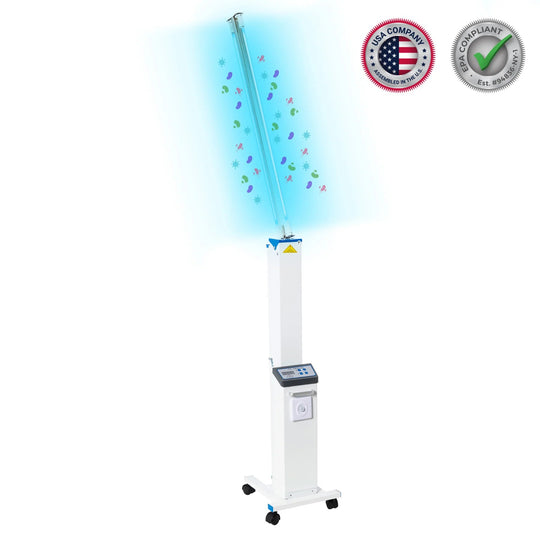What is UV-C Light and Its Significance?

Understanding UV-C Light
What is UV-C?
UV-C light is a type of ultraviolet light that's part of the electromagnetic spectrum. This spectrum includes various types of light, many of which are invisible to the human eye, like UV-C. So, what is UV-C specifically? It refers to a specific range of ultraviolet light with short wavelengths, typically between 200 nm and 280 nm. This wavelength range is what sets UV-C apart from the other types of UV light, namely UV-A and UV-B.
UV-C Wavelength and Its Properties
The UV-C wavelength is crucial in defining its properties and applications. Generally, UV-C light falls within the range of 200 nm to 280 nm, with 280 nm being a significant marker. This short wavelength range is what makes UV-C light so effective in certain applications, such as sanitization and disinfection.
The Role of UV-C in Sanitization
UVC Sanitization: How Does it Work?
UVC ultraviolet light sanitization is a process where UV-C light is used as a germicidal agent. This means it can destroy or inactivate microorganisms like bacteria, viruses, and fungi. How does it achieve this? When organisms are exposed to UV, specifically UV-C, it can penetrate their cells and disrupt the nucleic acid, rendering them harmless or even killing them.
UV-C Ultraviolet Light in the COVID-19 Pandemic
During the COVID-19 pandemic, the significance of UV-C light was highlighted due to its ability to disinfect surfaces and air. UVC light has been used in various settings to help reduce the spread of the virus, showcasing its potential as an effective tool in fighting infectious diseases.
Safety Considerations
Skin and Eyes: The Effects of UV Exposure
While UV-C is beneficial for sanitization, it's important to consider safety. Exposure to UV, especially UV-C, can be harmful to skin and eyes. It's crucial to use UV-C devices, like germicidal lamps or UV lamps, with appropriate safety measures to avoid direct exposure.
Technical Aspects of UV-C Light
Germicidal Lamps and Mercury Lamps
Germicidal lamps, often mercury lamps, are common light sources that emit UV-C light. These lamps have been widely used for air disinfection and in various sanitization processes.
UV-C and the Ozone Layer
It's interesting to note that naturally occurring UV-C light doesn't reach the Earth's surface in significant amounts, thanks to the ozone layer. This layer absorbs UV-C light, protecting living organisms from its harmful effects.
The Electromagnetic Spectrum and UV Light
UV-C light is a part of the electromagnetic spectrum, which includes a range of light types from gamma rays to radio waves. Ultraviolet UV light, which includes UV-C, occupies a specific portion of this spectrum, characterized by its short wavelengths and high energy levels.
The Bottom Line
Understanding what UVC stands for and its applications is crucial, especially in today's world where sanitization and disinfection have become paramount. While UV-C light is a powerful tool for these purposes, it's important to use it responsibly, keeping in mind its effects on health and the environment. As we continue to harness the power of UV-C light, its role in public health and safety remains significant.




Leave a comment